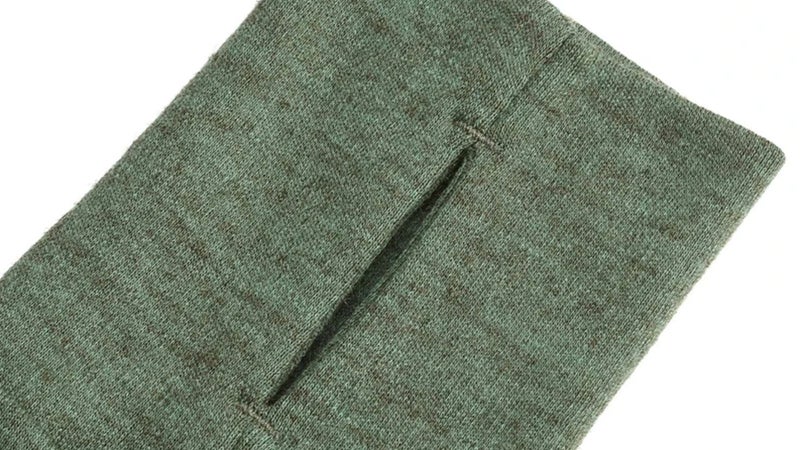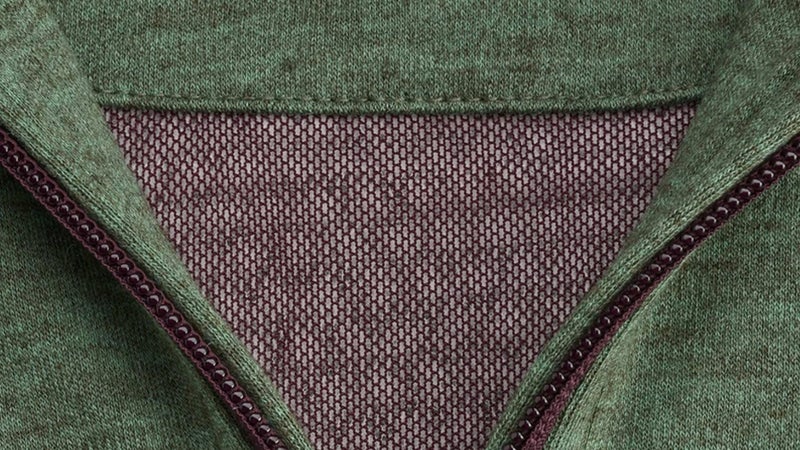Is there such a thing as a╠řmidlayer thatÔÇÖs as warm as a puffy╠řbut breathable enough to keep you╠řcomfortable╠řeven in heated indoor environments╠řor during╠řhigh-exertion activities? Until I started wearing the ($250), IÔÇÖd have told you no. But now I barely take the thing off.
With a body-fabric mix of 30 percent yak wool and╠ř70 percent merino fibers, and lined with Polartec Alpha insulation, the Xenolith is made from three different materials, each known for warmth and breathability.
Outdoorsy folks will already be familiar with merino wool, but you may not know exactly╠řwhat makes it so comfortable: A╠řwool fiber is scaly╠řand hollow. Water vapor expelled╠řby the wearerÔÇÖs body can fit between those scales╠řand is absorbed by the hollow interior. There, a chemical process breaks the bond between waterÔÇÖs hydrogen and oxygen molecules, forming heat. In cold weather, the heat produced by this process, along with the wearerÔÇÖs body heat, is trapped in pockets created by the natural chaos of woolÔÇÖs kinks and bends. In warm weather, wool draws moisture away from your body╠řand facilitates evaporation by spreading that moisture out across a larger surface area. The cool air produced by that evaporation is then trapped in the fabric. Wool keeps you dry and╠řstays warm when itÔÇÖs cold out,╠řand, accordingly, keeps you cool when itÔÇÖs hot out. Merino wool is made from a variety of sheep known for its fine, soft fibers. The╠řfibers work just like normal wool╠řbut are less itchy next to your skin.
Yak wool is even finer and softer than merino (if rarer╠řand more expensive as a result), and Kora has conducted its own╠ř that suggest the material to be 40 percent warmer, 66 percent more breathable, and 17 percent better at moving water away from your skin than merino. The company purchases its yak wool directly from producers in Tibet.

The third component of the Xenolith, Polartec Alpha, was developed for Special Forces soldiers deployed to the mountains of Afghanistan in the early 2000s. Designed as a more breathable alternative to high-loft polyester fleece, itÔÇÖs made from a mesh chassis that holds together a loose collection of polyester fibers. In static conditions, those lofted fibers trap a lot of air, providing a lot of insulation. Get moving, and the barely there fibers present╠řvirtually no obstacle to the air pressure generated by your increasing temperature. Alpha also wicks moisture╠řand spreads it out for quicker drying times.
Alone, a midlayer made from any single one of these fabrics will add a surprising amount of warmth╠řand remain comfortable across a wide range of temperatures and activities. Together, they create a sweater capable of providing outstanding insulation that stays╠řcomfortable when things heat up.
A xenolith, which the sweater is named after, is ÔÇöa╠řrock sandwich, if you will. KoraÔÇÖs╠řXenolith is made from a thin outer layer of tightly woven 30 percent yak wool╠řand 70 percent merino wool. Beneath this is╠řa layer of Alpha that covers your entire torso, your shoulders, and the outer side of your upper arms╠řbut doesnÔÇÖt cover your armpits, your inner upper arms, or your forearms. On in the inside, thereÔÇÖs╠řanother layer of that wool around your arms and the front of your torso╠řbut not your╠řback.

The end result╠řis practical and versatile on its╠řown, but something that will help╠řyou get more out of your other layers, too. Because the tightly woven wool fabric serves as a rudimentary shell, blocking some wind, the doubled-up front of the sweater╠řkeeps you cozy while cycling or skiing╠řwithout preventing your back from losing╠řheat. This arrangement also╠řkeeps your back dry while wearing a pack. Thin╠řand slim fitting, itÔÇÖs easy to wear under additional pieces╠řand perfect╠řunder a hard shell, reducing bulk and making the most of the limited air permeability offered by waterproof jackets by providing no other barrier to breathability.
While bird hunting last month in South Dakota,╠řconditions were positively dreadful. Single-digit temperatures combined with high winds and light precipitation to create bone-chillingly damp weather that instantly stung any exposed skin with blown ice particles. Conditions╠řwere so bad that I lost feeling in one of my fingers, which has yet to╠řrecover.╠řBut╠řlayered over a wool base layer╠řand beneath╠řa lightweight puffy and hard shell, the Xenolith enabled me to hike around all day in otherwise╠řcomplete comfort.
One night in the remote backcountry of southwest Montana last fall, just outside Yellowstone National Park, temperatures plummeted unexpectedly into what also felt like the single digits. IÔÇÖd only packed a 20-degree sleeping bag╠řbut was able to sleep soundly in it wearing╠řnothing but my base layers and this sweater.
Over the holidays, while my wife and I were hiking around our cabin in northern Montana, just outside Glacier National Park, temperatures ranged from the low teens to the mid-forties. For the entire trip, all I wore were╠řbase layers, this sweater, and a hard shell.
Right now╠řIÔÇÖm sitting in front of the fireplace at home in Bozeman, Montana, wearing the Xenolith over a thin merino T-shirt. The thermostat tells me itÔÇÖs 69 degrees in my living room, and IÔÇÖm as comfortable now as I will be when I take the dogs for a walk after I wrap up this article. ItÔÇÖs 20 degrees outside today, and all IÔÇÖll need to do is put on shoes.


